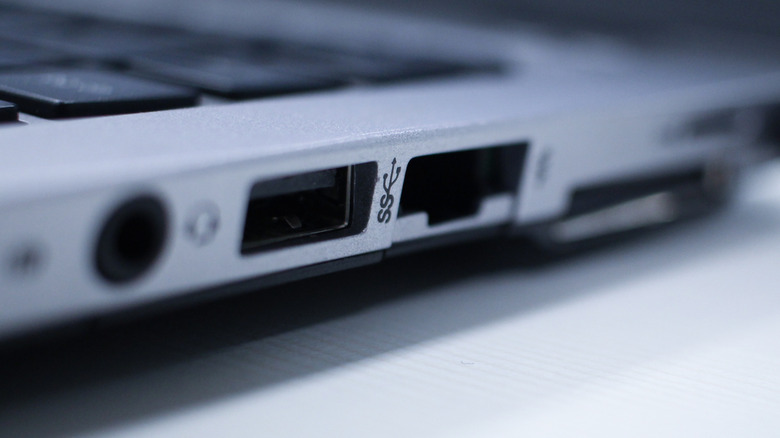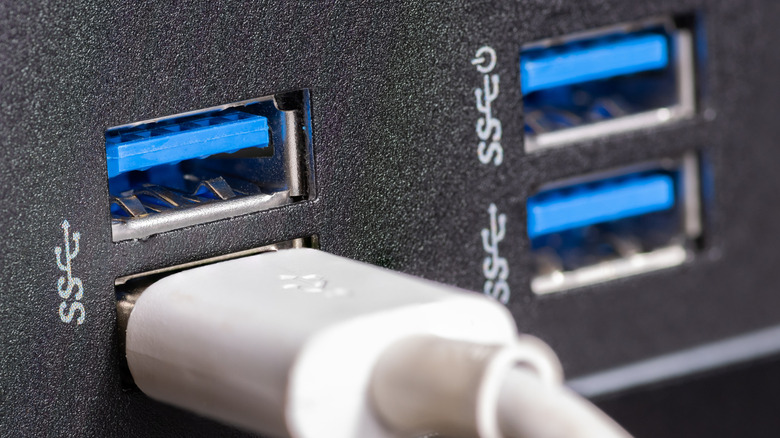What Is An SS USB Port?
Looking at the back or side of your laptop, PC tower, or computer monitor, you’ll notice they all have something in common: multiple USB ports. If you’re like many computer users, you may not pay much attention to these ports. You know they’re used to connect peripherals to your computer and transfer data, among other things, but there’s a good chance you never got into the specifics of what each type of USB port can do or what makes them different from one another.
In reality, at first glance, it’s not that obvious that there’s any difference between them — unless you’re dealing with a USB-C port, which stands out for its compact design and unique, reversible shape. However, If you take a closer look, you’ll see there are also differences between ports that appear to be similar. One of the most common USB ports you’ll find is called an SS port, which stands for SuperSpeed port. Depending on the device you’re using, you may even see the SS designation next to the corresponding ports on your devices, letting you know exactly what it is.
What is an SS USB port?
As its name suggests, the SS or SuperSpeed USB port is a USB standard that delivers faster data transfer speeds than older USB ports. The SS USB port made its debut back in 2008, and you may know it by its other name: USB 3.0. USB 3.1 and USB 3.2 ports also fall under the SuperSpeed banner. USB 3.0 ports replaced the USB 2.0 standard, which, until that time, had been the standard for most devices and had a maximum data transfer speed of only 480 Mbps. By comparison, USB 3.0 ports support transfer speeds as fast as 5.0 Gbps, which is ten times faster than the maximum speed offered by USB 2.0, while USB 3.1 and USB 3.2 ports are even faster, with speeds of up to 10 Gbps and 20 Gbps, respectively.
What all this means is that SS USB ports have what it takes to handle large file transfers, high-speed data syncing, and peripherals like external hard drives, gaming accessories, high-resolution webcams, and other devices that need more bandwidth and faster transmission speeds than what USB 2.0 offers. You can easily spot a SuperSpeed port by its classic blue (USB 3.0) or teal blue (USB 3.1 and 3.2) color, whereas USB 2.0 ports are black. SS USB ports are backward compatible with USB 2.0 devices. However, if you connect an older device to one of these ports, the data transfer speed will revert to the maximum supported by the older standard.
Source: http://www.slashgear.com/1739463/ss-usb-port-uses/
 techandtab
techandtab


